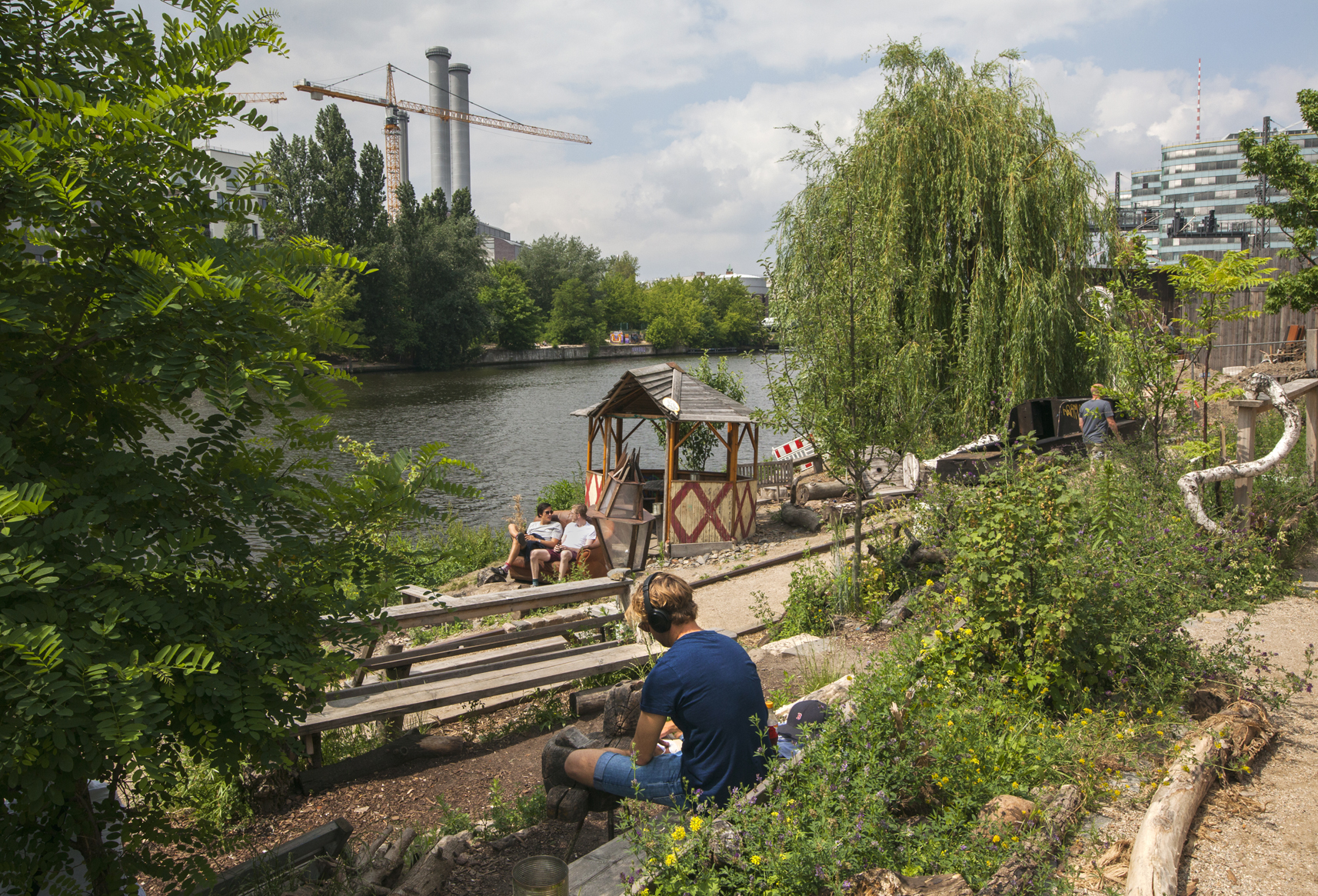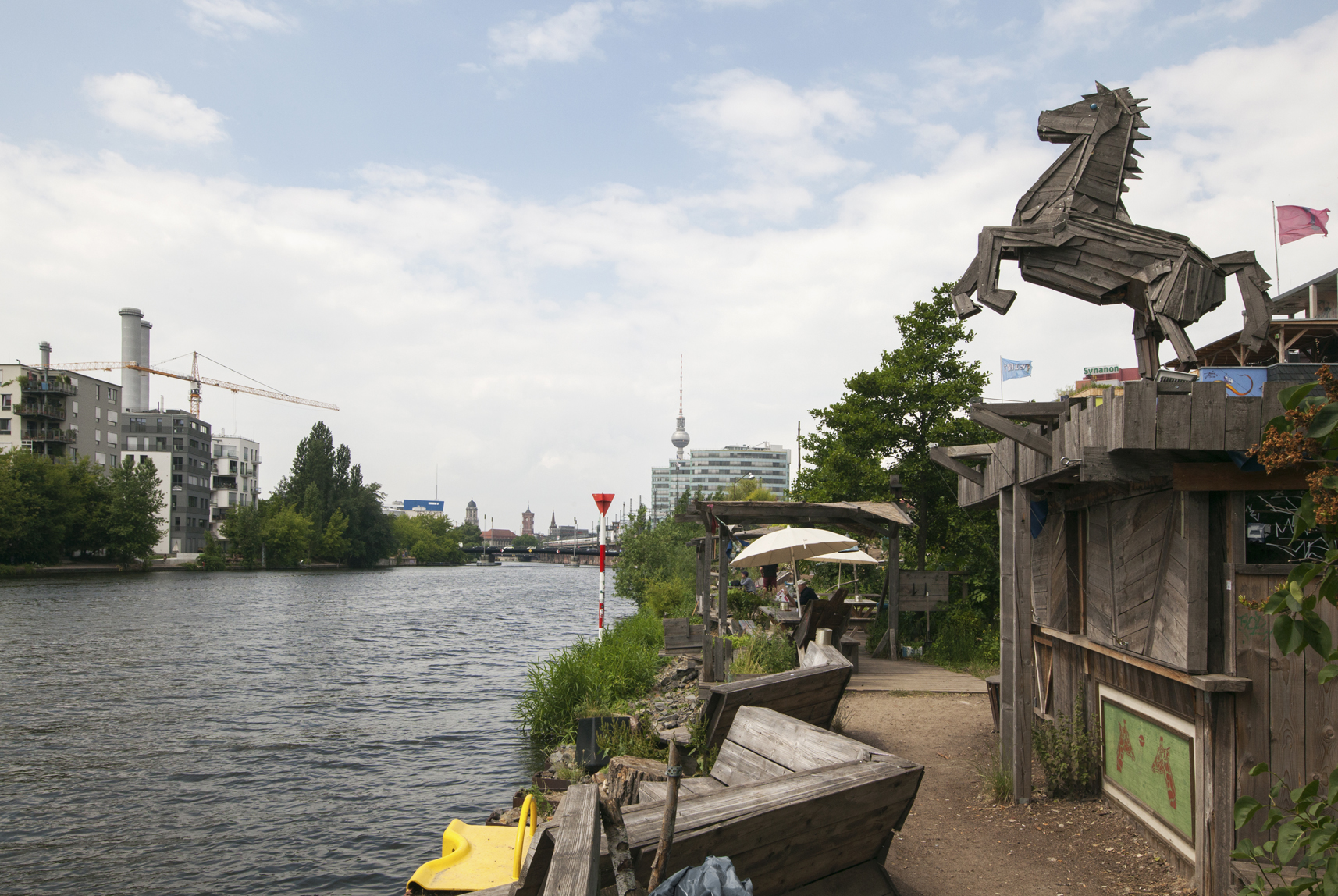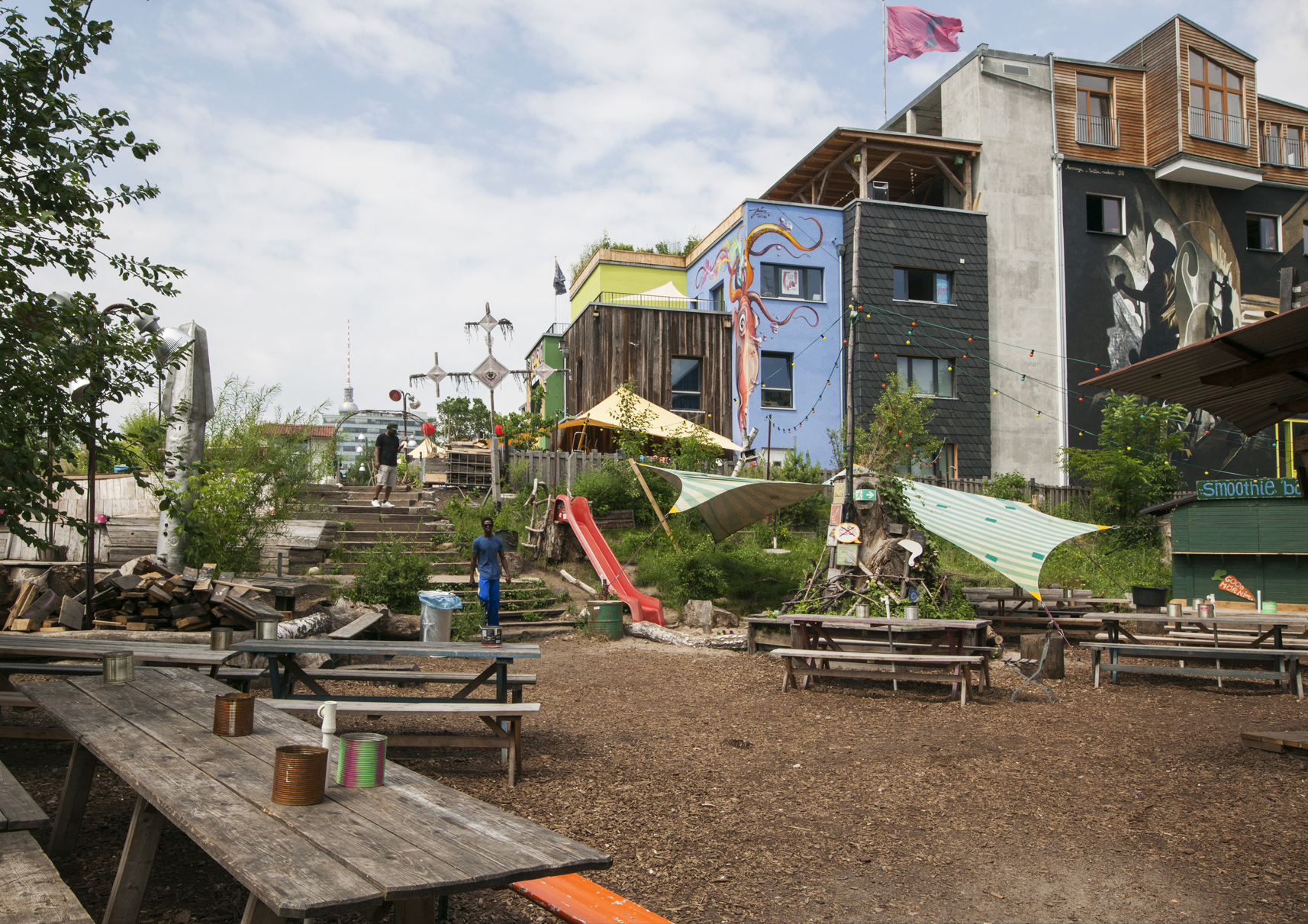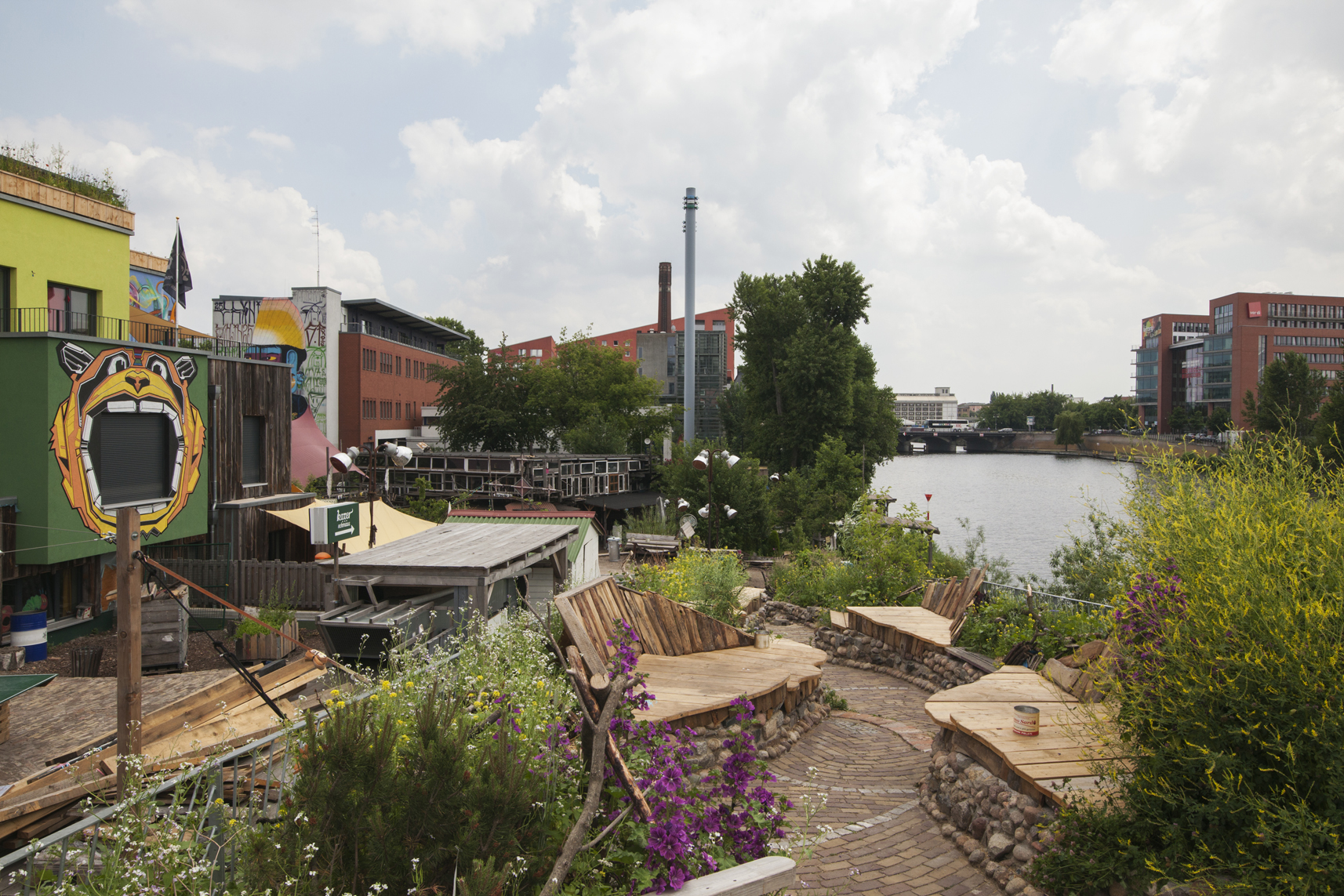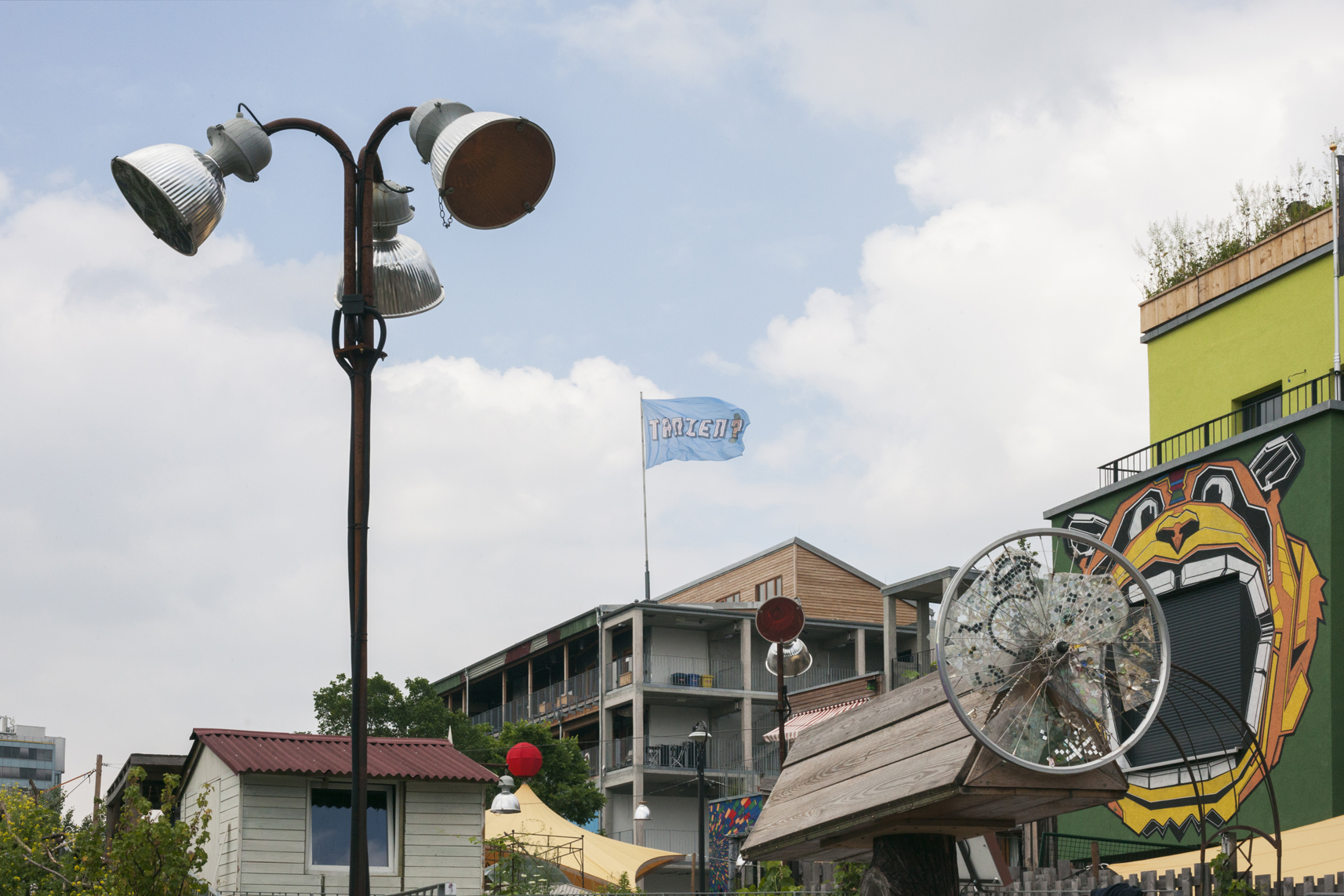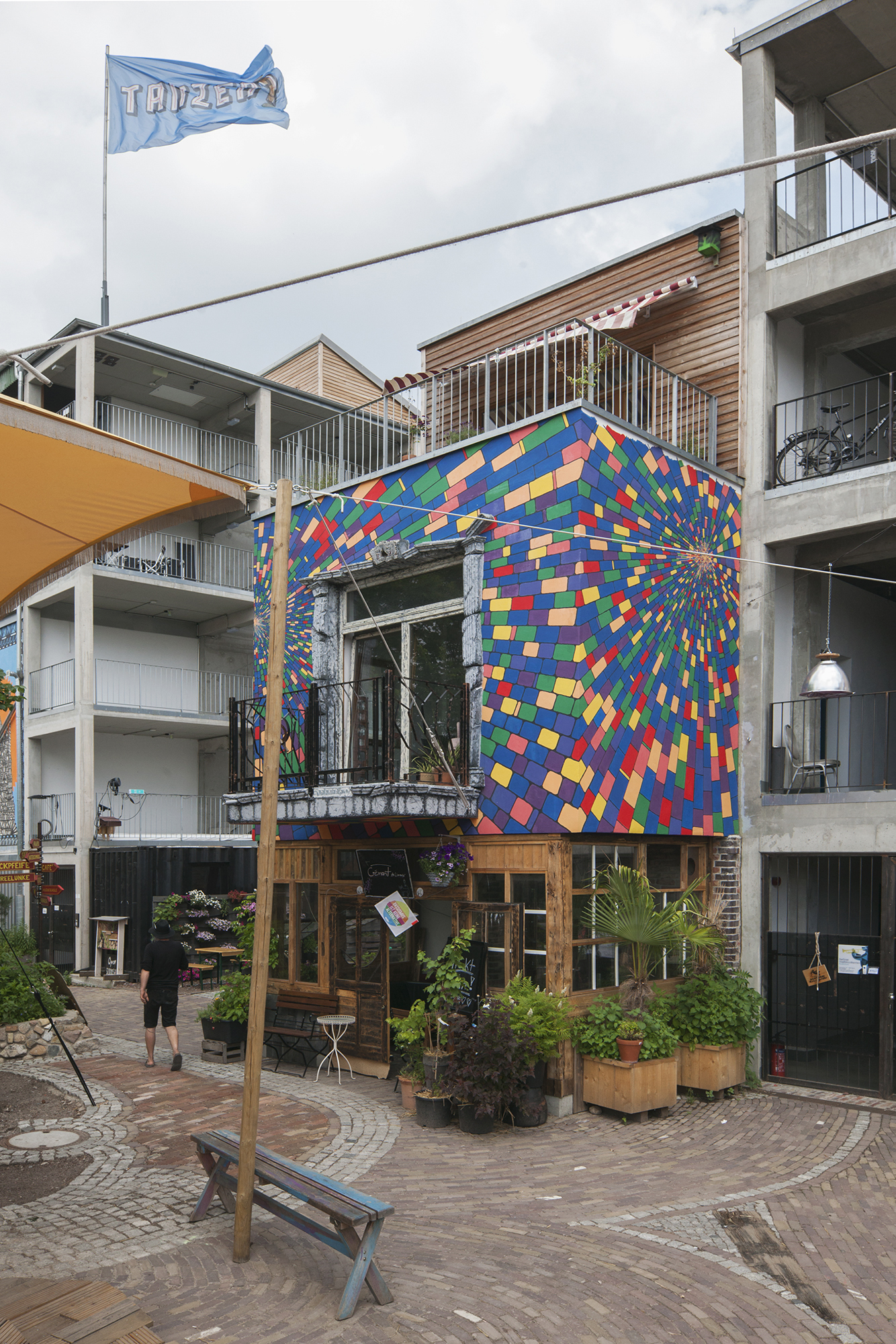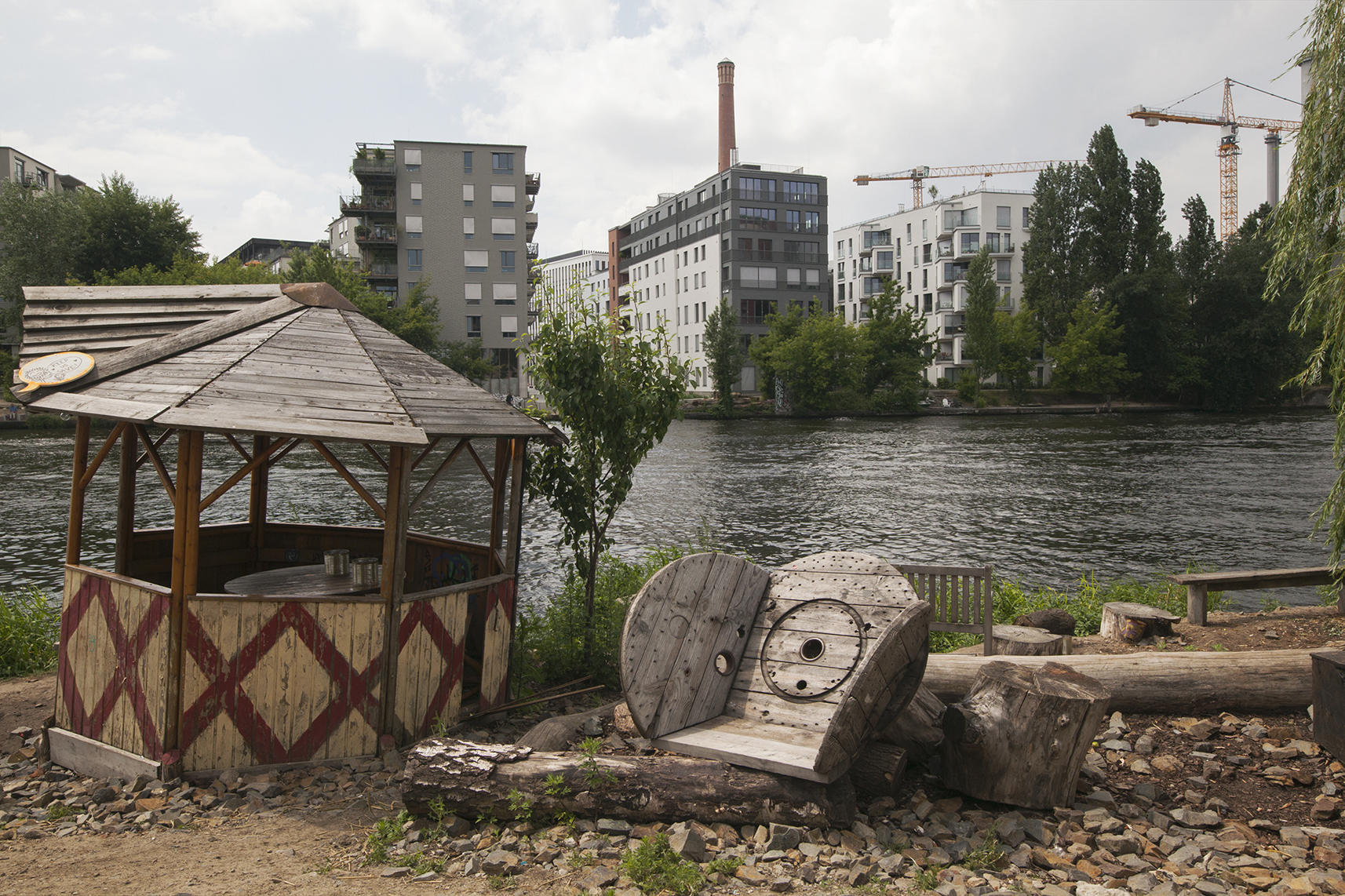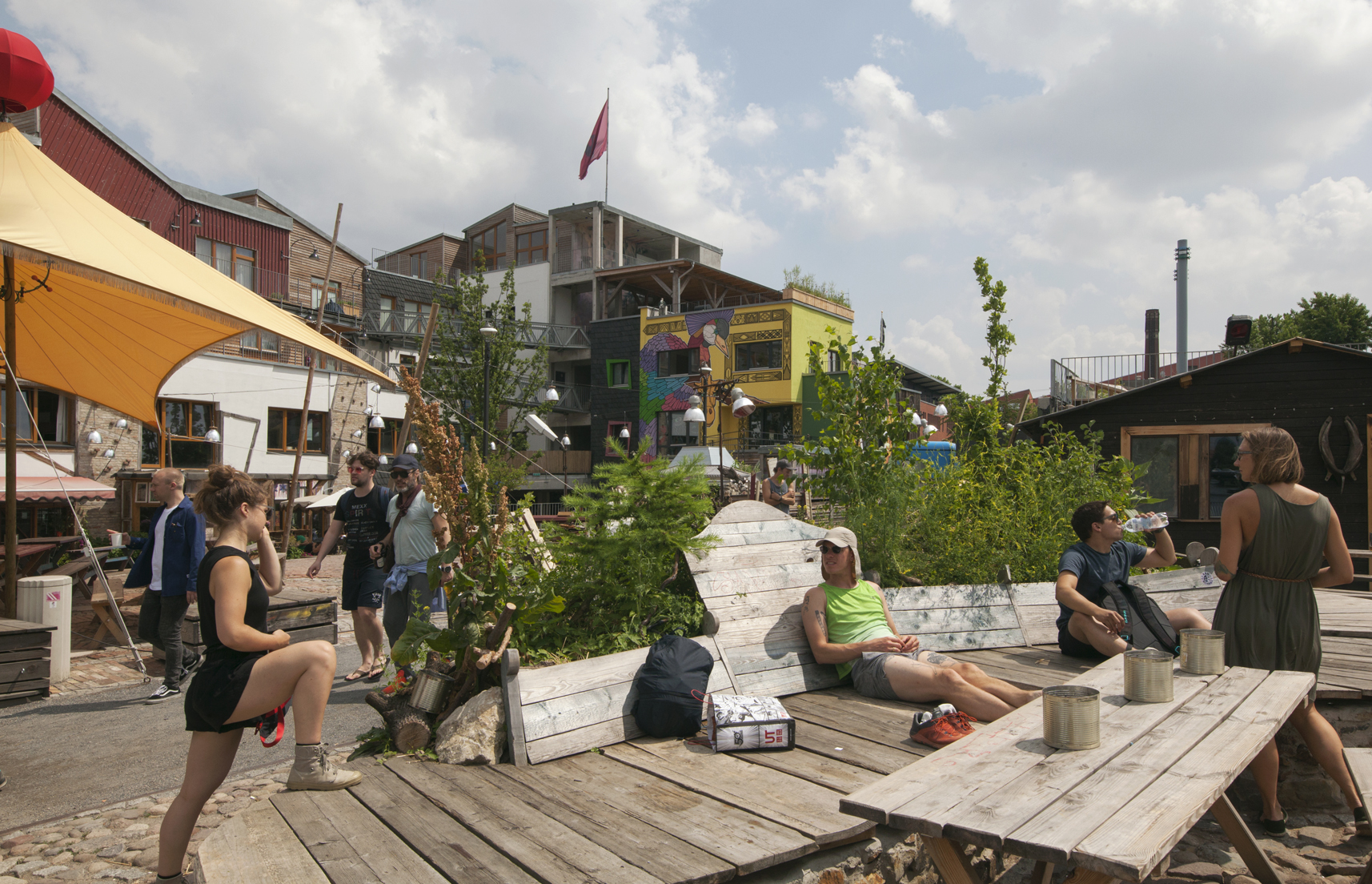How ‘business hippies’ reinvented Berlin at Holzmarkt
The development of Holzmarkt has shown that Berlin is capable of both imagining and creating places of social cooperation. Once organisers of illegal raves, a group of friends are now building a whole new district; and with it, reimagining the city’s future.
On the banks of the river Spree, in the centre of Berlin, rises a city quarter that depends less on property yield than on the value of civic participation. Its location is exceptional, its concept remarkable. The development of Holzmarkt has shown that Berlin is capable of both imagining and creating places of social cooperation.
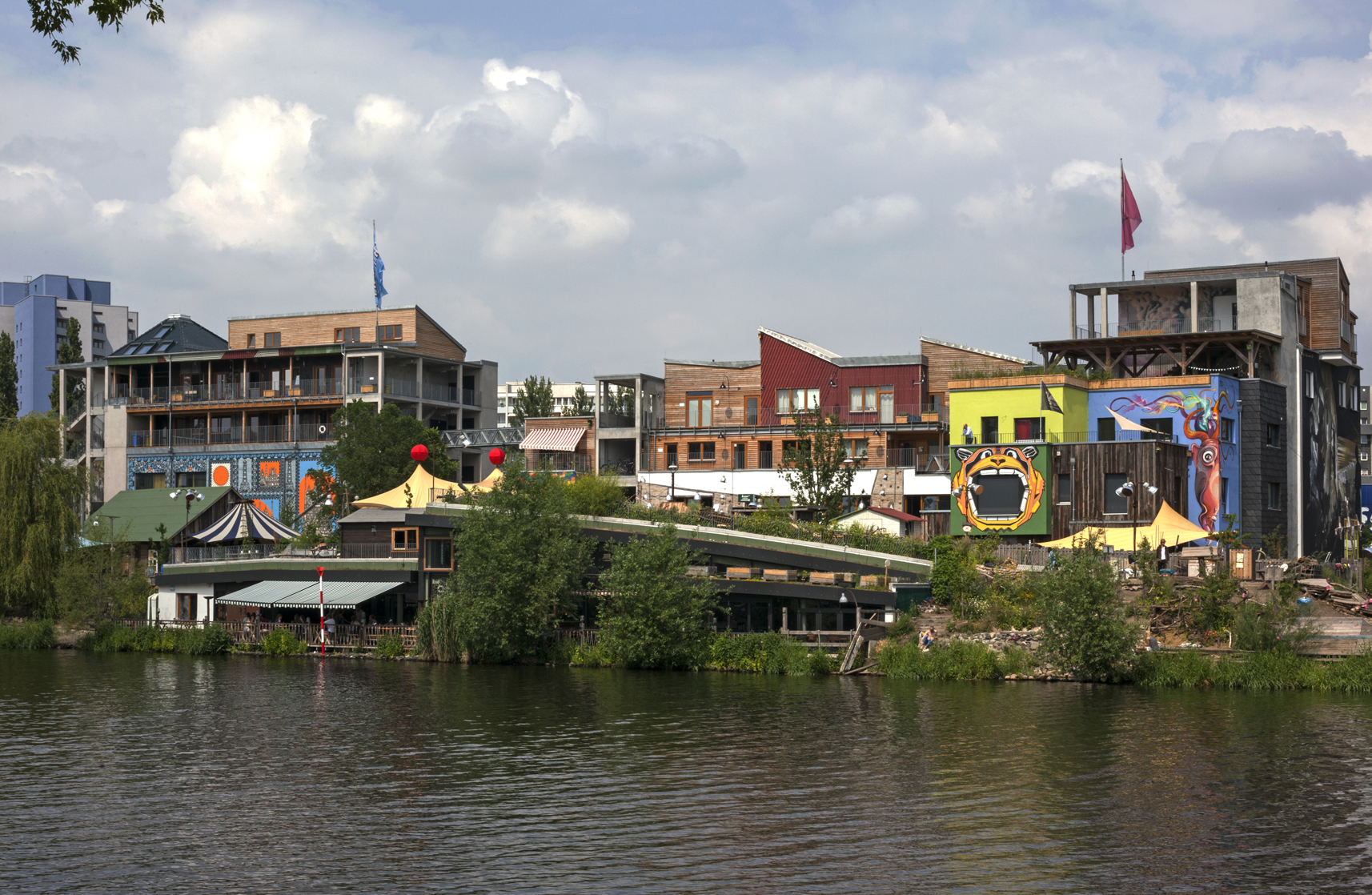
Berlin’s housing policy, one of the most progressive today, has been cultivated over decades. Even large-scale neo-liberal urban renewal policies in the early 1990s could not change this, though their effect on Berlin has been growing steadily. This is how city planner Ingrid Krau described that time: “After the fall of the Berlin Wall, everybody seemed to believe that the market economy had finally won the day. With abolished social housing and the backup of the federal legislation of a unified Germany, the Berlin senate administration sold off the family silver, so to speak.”
In recent years, urban conflicts in Berlin have largely centered around the right to develop land of importance, as portions of formerly public land have become private or semi-private property. These activities have encountered resistance: grassroots movements have managed to return many contested areas to the public, virtually toppling the course of urban development. A prominent example is the struggle over Berlin’s Tempelhofer Feld, where Berliners successfully stood up to commercial redevelopment of the former airport by forcing the city senate to a referendum in 2014 (although the area continues to be under pressure to develop).
While investors have been busily pulling up corporate headquarters and office lofts, hotels and multi-purpose halls on recently privatised land on both sides of the Spree, the gaps between commercial projects have been filling with innovative, informal urbanism. Holzmarkt, often referred to as Berlin’s largest urban experiment, is a model of urban generation that has helped launch a small revolution in urban planning.
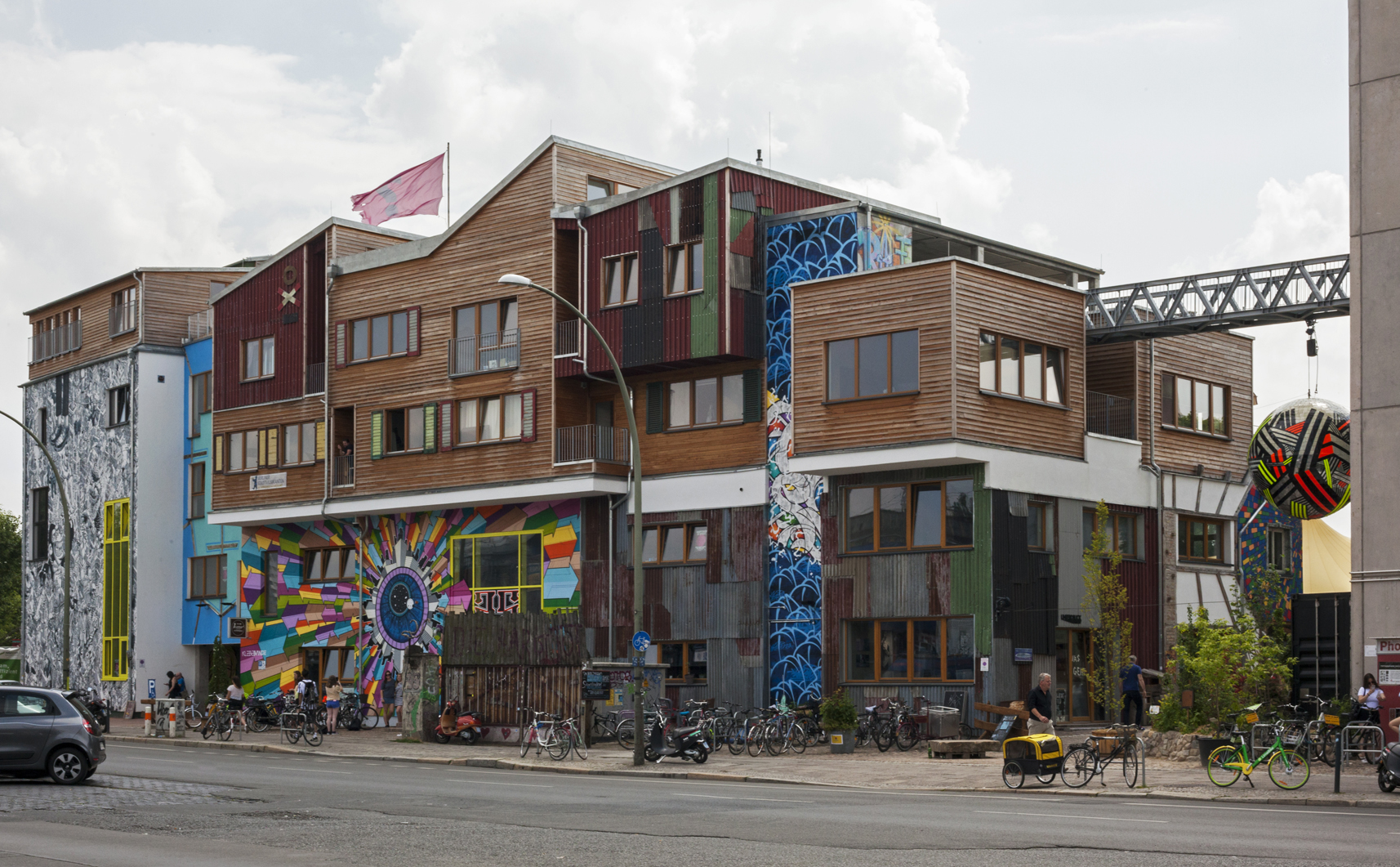

East of Alexanderplatz central square, along the former Berlin Wall, the land on which Holzmarkt sits at first appears completely unremarkable. The 12,000m2 lot is cut in two by the passing city railway tracks, with a number of work and leisure spaces built on both sides. The northern part, underneath and behind the railway bridge, features co-working spaces, and was meant to house the now-cancelled temporary residential area Eckwerk. Serving as a cultural area open to the public, the southern part is a platform for local entrepreneurs, and includes a restaurant, café, bakery, various studios, workshops and a day-care centre. Even the alternative nightclub Kater Blau, subject to a stringent door policy at night, at times opens up to a wide audience during the day, with theatrical performances or exhibitions by refugees.
The credo for the community behind Bar25 became a culture of togetherness and creativity, breaking away from social conventions and designing new, self-sufficient ways of life
Holzmarkt roughly translates to ‘timber market’, and the site lives up to its name. The space is designed according to a collaborative model of co-creation. There are buildings made of concrete, stone and wood, as well as wooden hut-like structures, partly self-contained and interlaced. Construction trailers, stacked on top of each other, quite beautifully embrace the site’s aesthetics.
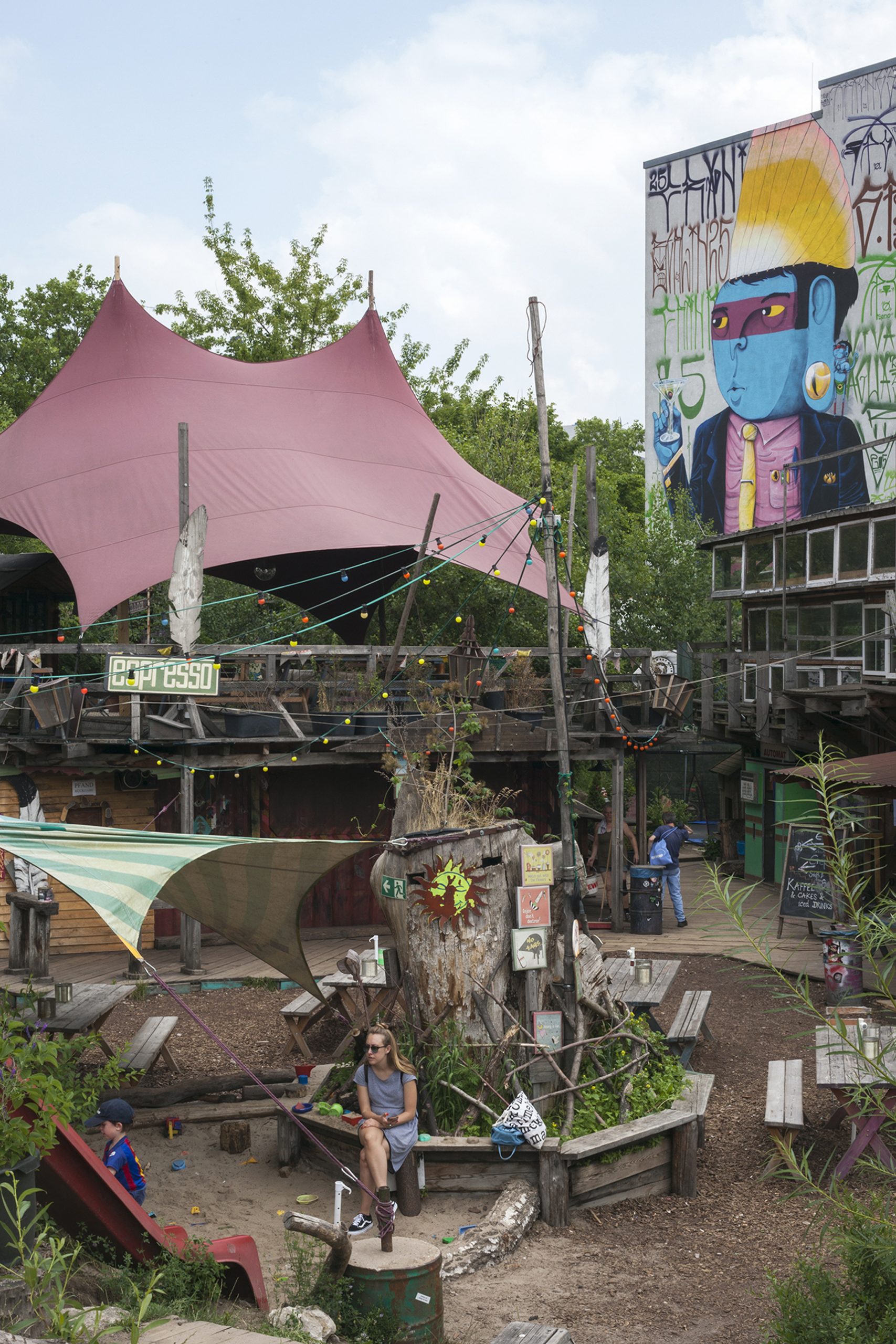
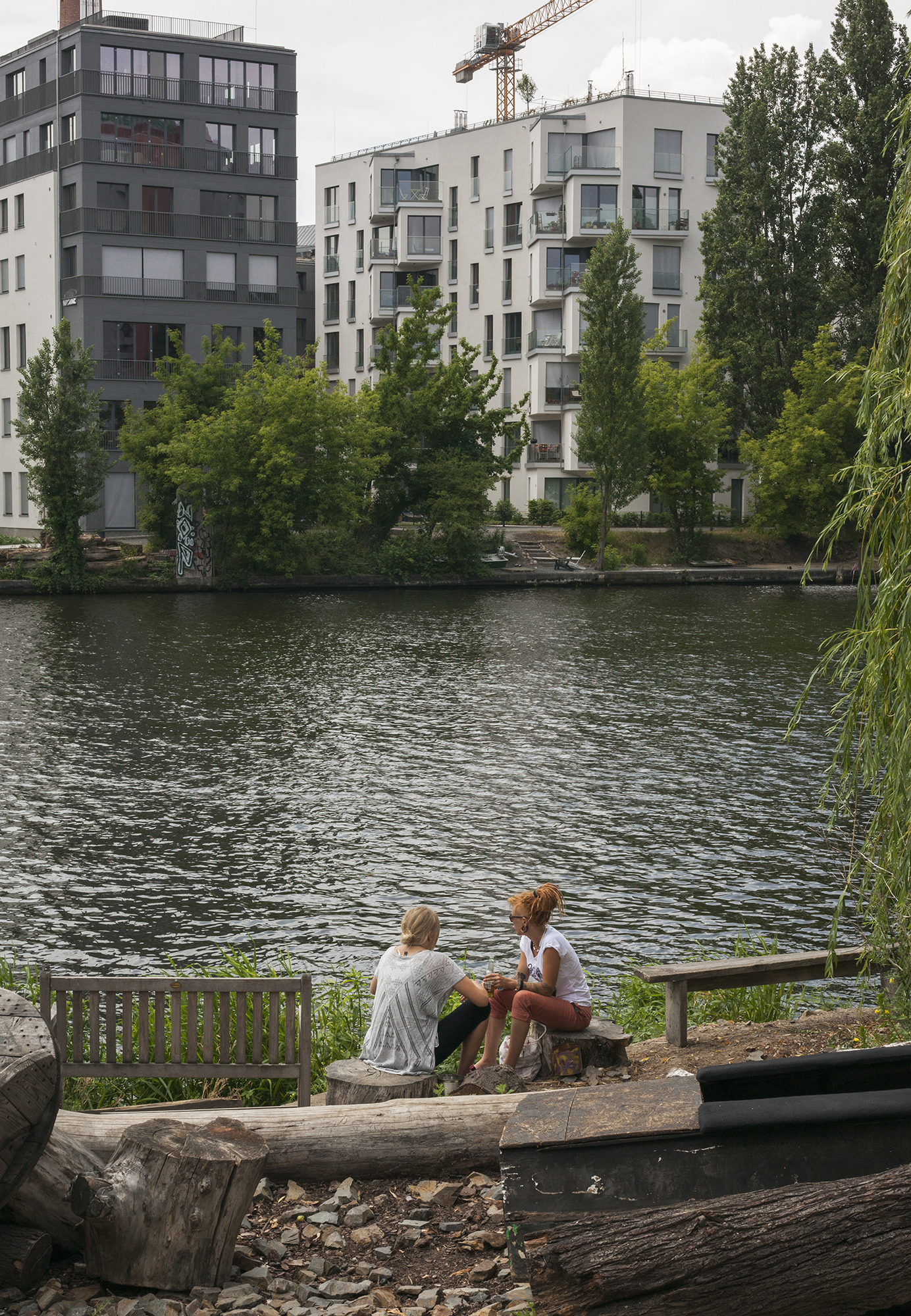
This innovative village has roots in one of Berlin’s most notorious clubs, Bar25, which operated on the premises for seven years. In 2004, a small group of friends parked a GDR-era VW Kombi van on a strip of uncultivated land, fitted it with a sound system and began to sell drinks. They soon assembled huts and shelters from materials collected in and outside of Berlin, and moved onto the site, throwing semi-illegal parties lasting several consecutive days and nights, occasionally as fundraisers for progressive causes. This strange idyll resembled both a rave and a trailer park, without quite being either. The audience grew, and the Bar25 squad did too – eating, drinking, working and living together like a family.
What the site offered in terms of public entertainment steadily expanded over time, with a restaurant, theatre and cinema, guesthouses and a swimming pool. The credo for the community behind Bar25 became a culture of togetherness and creativity, breaking away from social conventions and designing new, self-sufficient ways of life – and their voice became a substantial part of Berlin’s urban subculture. “We are not a political club,” Steffi-Lotta, one of the founders, clarified. “But, of course, we have an opinion, and we state it openly.”
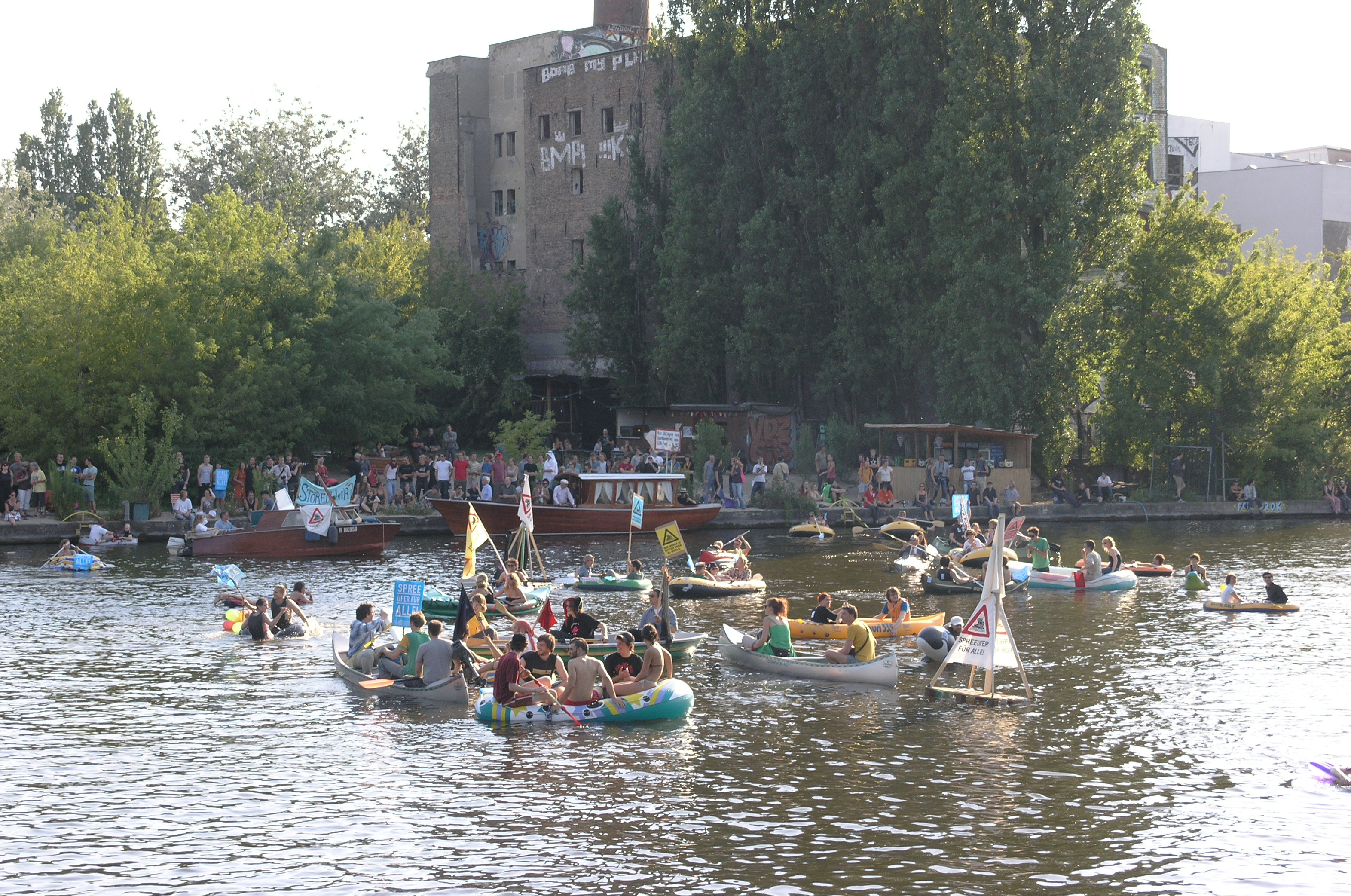
The popularity of Bar25 and other clubs in the area led to an attempt of the city government to commercialise development in the area under the moniker Mediaspree. “But we did not want anything to be built there that had nothing to do with the community,” recalls Juval Dieziger, veteran of the club and village leadership. Juval and other Bar25 co-founders led the resistance to the commercialisation and privatisation of the Spree riverfront, supporting the right to (continued) public access to the waterfront, with varying degrees of success. Amid the battle to ‘sink Mediaspree’, the club’s temporary lease was terminated. In September 2010, after a long battle in court, the club left the premises – memorably closing with a five-day party.
The land is said to have cost over €10 million; it is worth many times more than that today.
Soon, though, Bar25 moved to the opposite side of the river, where it stayed for two years, reincarnated as KaterHolzig. Economically, the new club gradually moved away from its subcultural beginnings. Soon there was talk of ‘business hippies’ – a term approved of in Holzmarkt circles. The focus, affirms Juval, remained counter-cultural: covering costs rather than maximising profit; and utilisation of the property, not the property itself. The founders, and a tight-knit group of collaborators, remained as close as a family. “You simply don’t let each other down,” remarked Hannes Husten as he took me through the site. The son of one of the original team members at Bar25, who is now a board member of the Holzmarkt co-operative, Hannes too works at Holzmarkt, as studio manager and PR.
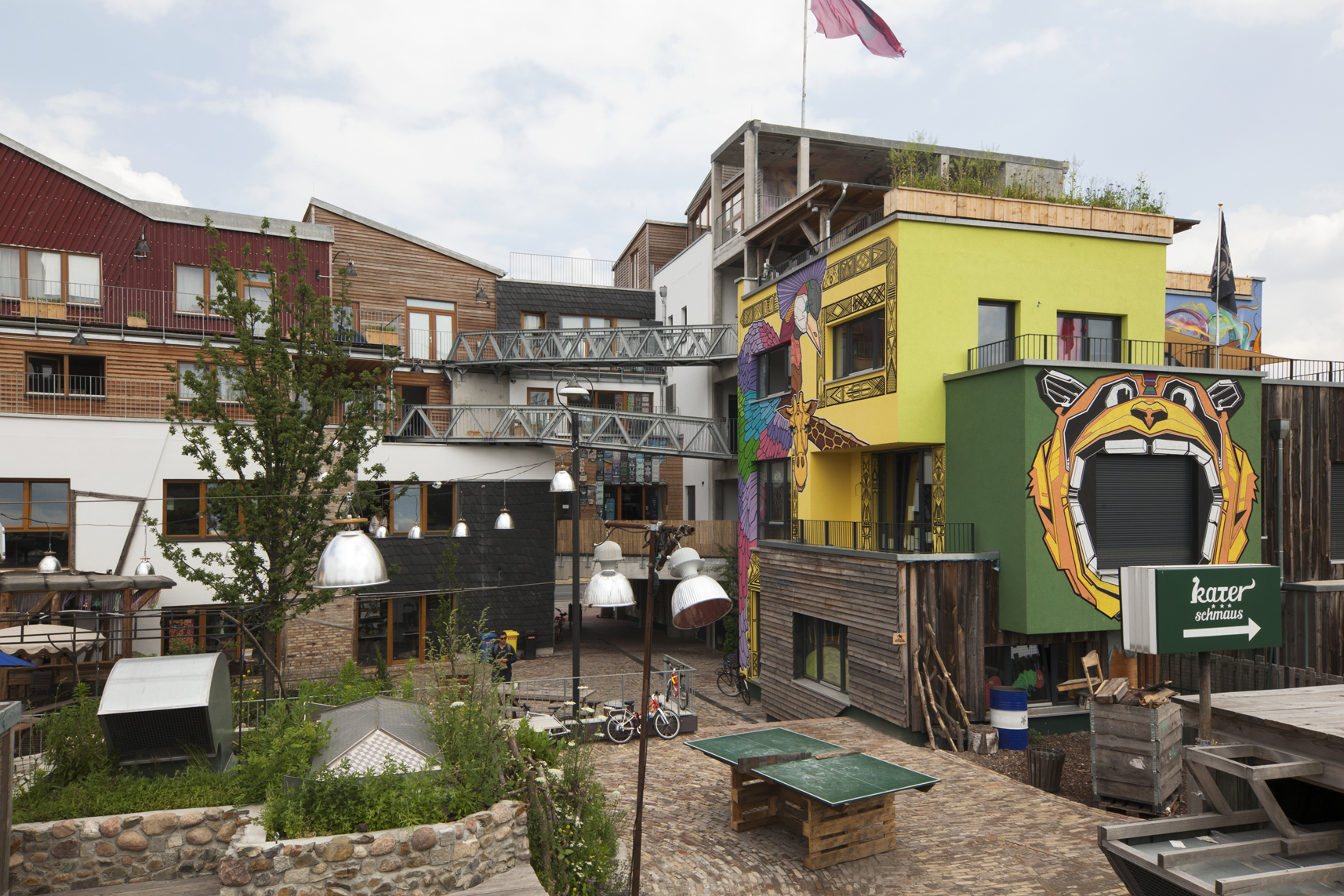
The group was still hoping to return to their home location, and give the city more than ‘just’ a club. Protracted negotiations with the city took place. But the owner of the land on which Bar25 had stood, the city-owned Berlin Municipal Sanitation, was selling the property to settle debts. And so, one of the most desirable open spaces in the city became the object of a bidding contest, which was finally resolved in 2012.
Miraculously, alternative project developers trumped established real estate companies: the founders of Bar25 had bought back the site they had made famous. The land is said to have cost over €10 million; it is worth many times more than that today.
The details of the winning bid became known in 2013, when the construction of the new Holzmarkt neighbourhood began. The Bar25 team had partnered up with the Swiss pension fund Abendrot, which bought the property and thus blocked speculation. The land was given over to the newly formed Holzmarkt 25 co-operative on a 75-year leasehold basis. The co-operative has since been responsible for developing and leasing the land.
The alternative club has grown to be a multi-million-euro company. “If that had not been the case, we would have disappeared many years ago, just like many other groups trying to do similar things.”
Today, Holzmarkt 25 is made up of 13 co-founders and a large number of different actors, each bringing their own expertise to the table. The Genossenschaft für urbane Kreativität eG (GuK – Cooperative for Urban Creativity) is meant to be the cornerstone of a sustainable financing model, designed to be as transparent as possible and to facilitate the exchange of information between participants. The poster in the entrance area reminds Holzmarkt visitors, “Big dreams need space and courageous investors”. The latter are organised in several investor, leasehold, operating and district co-ops that provide capital. It is their sheer number that protects Holzmarkt from collapsing should the individual parts fail. Several dozen entrepreneurs from the creative and retail industries occupy the facilities. In order to be admitted, they were all required to explain how their participation would contribute to the common good. And, last but not least, representing the interests of approximately 700 participating citizens, the civic association Mörchenpark takes care of the open space, offering gardening workshops for kids and school classes.
The alternative club has grown to be a multi-million-euro company. “If that had not been the case, we would have disappeared many years ago, just like many other groups trying to do similar things,” says Hayk Seirig, an early member of the Bar25 crew, now chef at the on-site restaurant Katerschmaus. For Ingrid Krau, the growth of Holzmarkt “should be considered against the backdrop of land prices rising to astronomical heights. Even if public land was given to co-operatives today, hardly any of these groups have at their disposal the resources needed to cover the high costs involved.” What helped Holzmarkt attract funding from a wealthy investment fund was its own financial assets, and an established structure, capable of protecting both investors and employees.

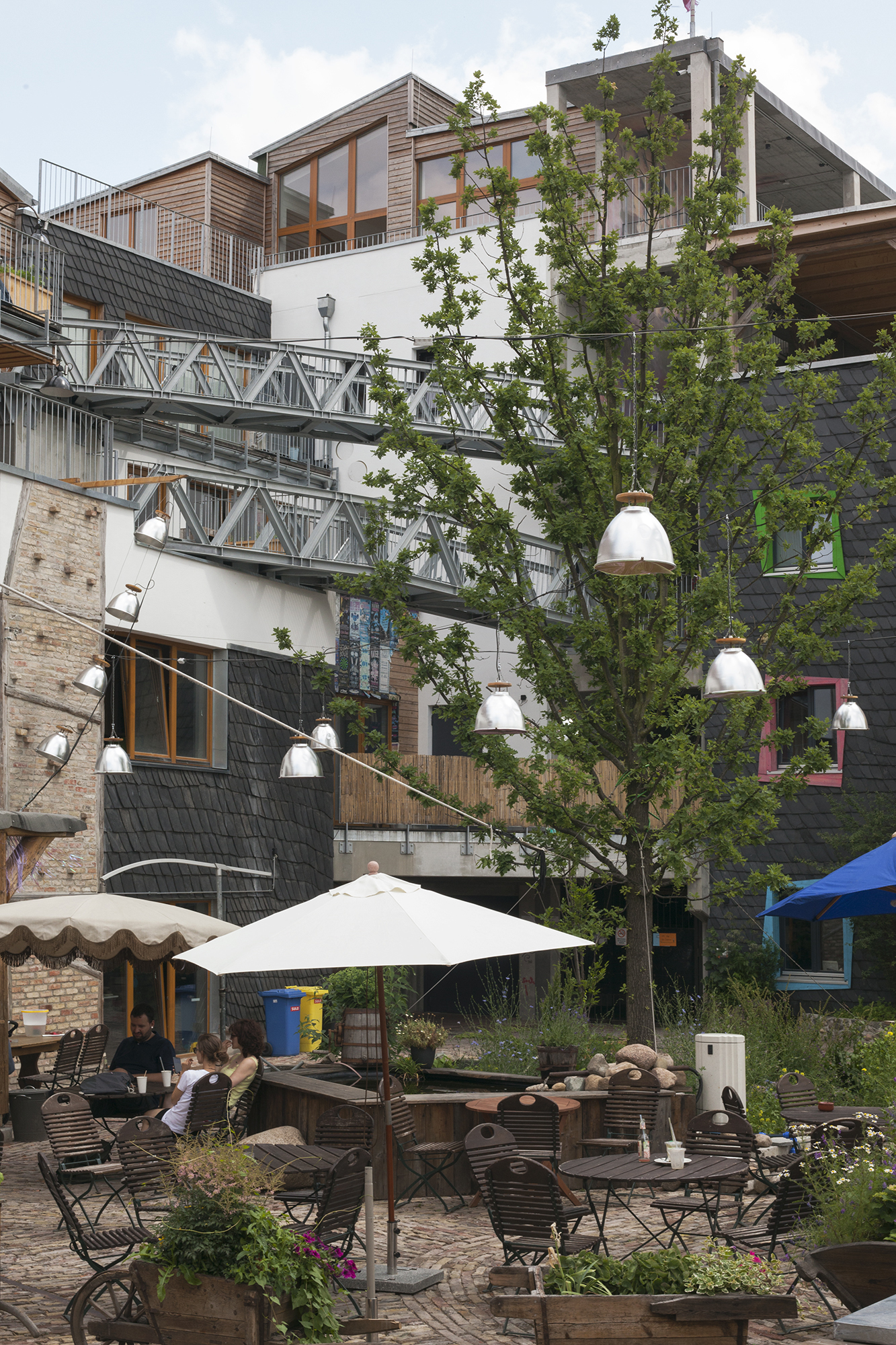
Not everything has gone according to plan. Recently, the development of the northern corner of the site has dramatically stalled. The proposed Eckwerk was to provide free space for students and researchers, artists, craftspeople and start-up entrepreneurs, bridging temporary living and working – just like in the days of Bar25, except on a larger scale. There was talk of five towers interconnected with green footpaths. The project started in partnership with Gewobag, the state-owned housing association. However, disputes over priorities led to such litigation between the city and the developers, as well as delays and costs, that Abendrot got involved in 2017, separating the land from Holzmarkt’s purview.
With Bar25 and KaterHolzig both victims of the speculative real estate market, Eckwerk was one of the strongest new ideas for Berlin’s urban development in a long while. Its failure to come to life, confirmed by 2018, was experienced by many as a disappointing déjà vu. Indefinitely put on hold, Eckwerk bears resemblance to the original Bar25: at first well received, and used by the city of Berlin for its own marketing campaigns, but not sufficiently supported when the political backing was most needed. Its failure showed city bureaucracy at its most inflexible.
At a PINC conference in the Dutch city of Zeist in 2015, Juval Dieziger spoke out in favour of creative bureaucrats, as he called them: open to new ideas, letting citizens participate in the urban development. Back when Bar25 was first being assembled, city authorities were in unchartered waters themselves. Due to a lack of appropriate regulations, they waved through development plans that would not be approved today. At Holzmarkt today, the focus has shifted: while the outcome of ongoing negotiations between remaining and new partners is uncertain, the creation of new ideas seems to have receded into the distance, while the need for defending the old may now be more important than ever.
Cities can take on paradoxical features, from enormous wealth to glaring poverty. Global capital can spread conformity. Yet where there is gentrification, there is also experimental living practices, often side by side. And while (pockets of) cities are run by powerful interest groups, at another time they become the birthplace of democratic achievements.
Berlin is no exception. Time will tell whether Holzmarkt can be implemented on a grand scale or whether it remains a (best-) practice example that can only function locally. For some, Holzmarkt is nothing more than an institutionalised embodiment of party culture, acutely hypocritical, pretending to be committed to a subcultural attitude even though it has long arrived into the world of mainstream development – and benefitted from it. But for others, like Hannes Husten, member of the second generation Holzmarkt community, the evolution from the former Bar25 notoriety to a public-spirited small business “has great emancipatory power”.
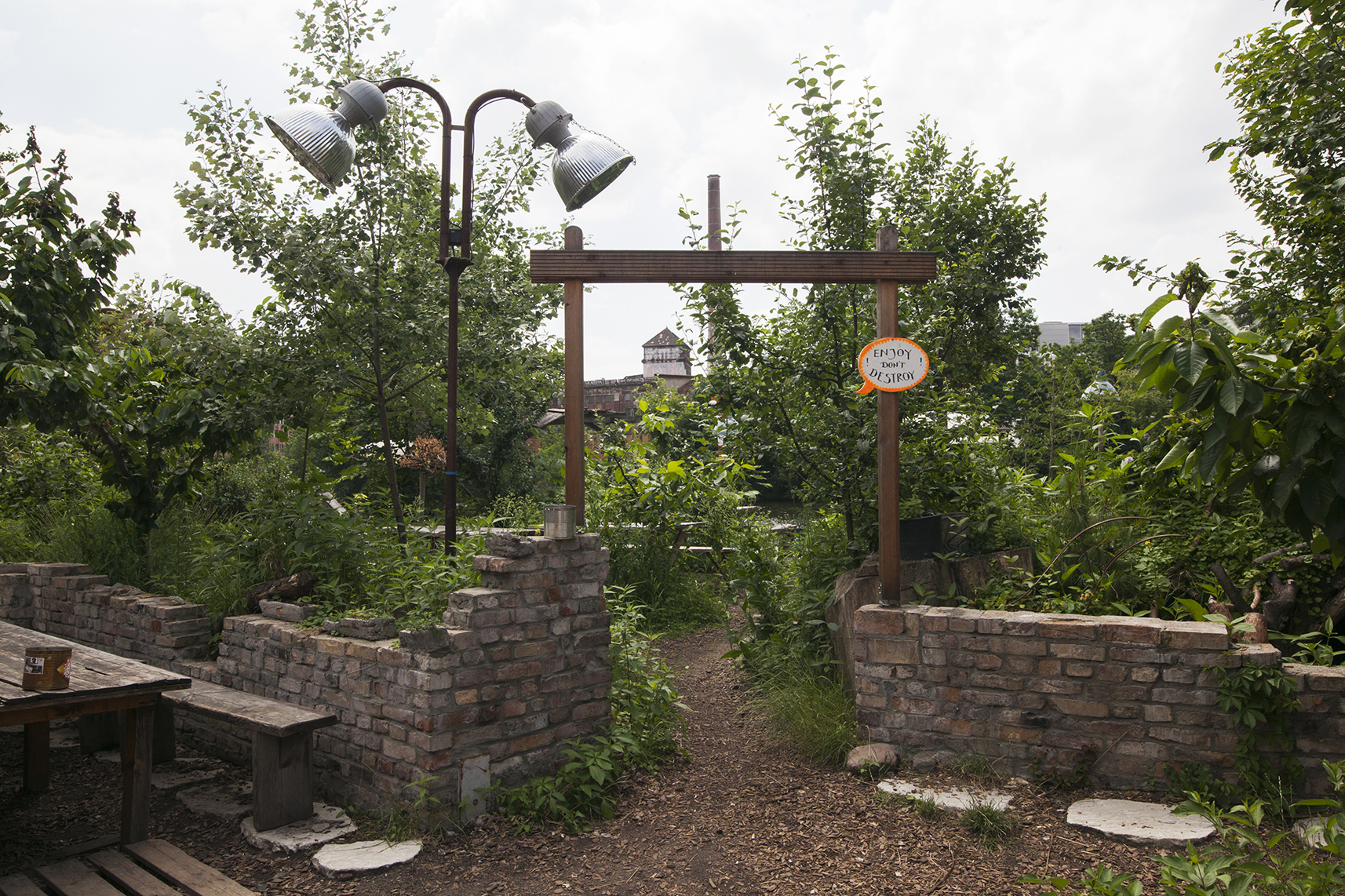
A post scriptum to the online edition: Lately, with new noise regulations and licensing laws, the district has put even more pressure on Holzmarkt. Abendrot reportedly is just a few steps shy of coming up with an ultimate decision on whether to sell the Eckwerk property; and the Holzmarkt itself is said to be close to being down and out. On June 21, Holzmarkt initiated a protest against the city government regulations. Their website reads: “Back in 2008 we mobilised thousands of Berliners to demonstrate against Mediaspree. Now, who would have thought this is necessary 11 years later?”
Thank you to the Holzmarkt team, and to Manuel for telling this important story. You can find out more about the past, present and future of Holzmarkt on their website. Thank you also Tjaša for the photos! This article also appears in AP#11: Transitions – pick up your free print copy from one of our stockists!
